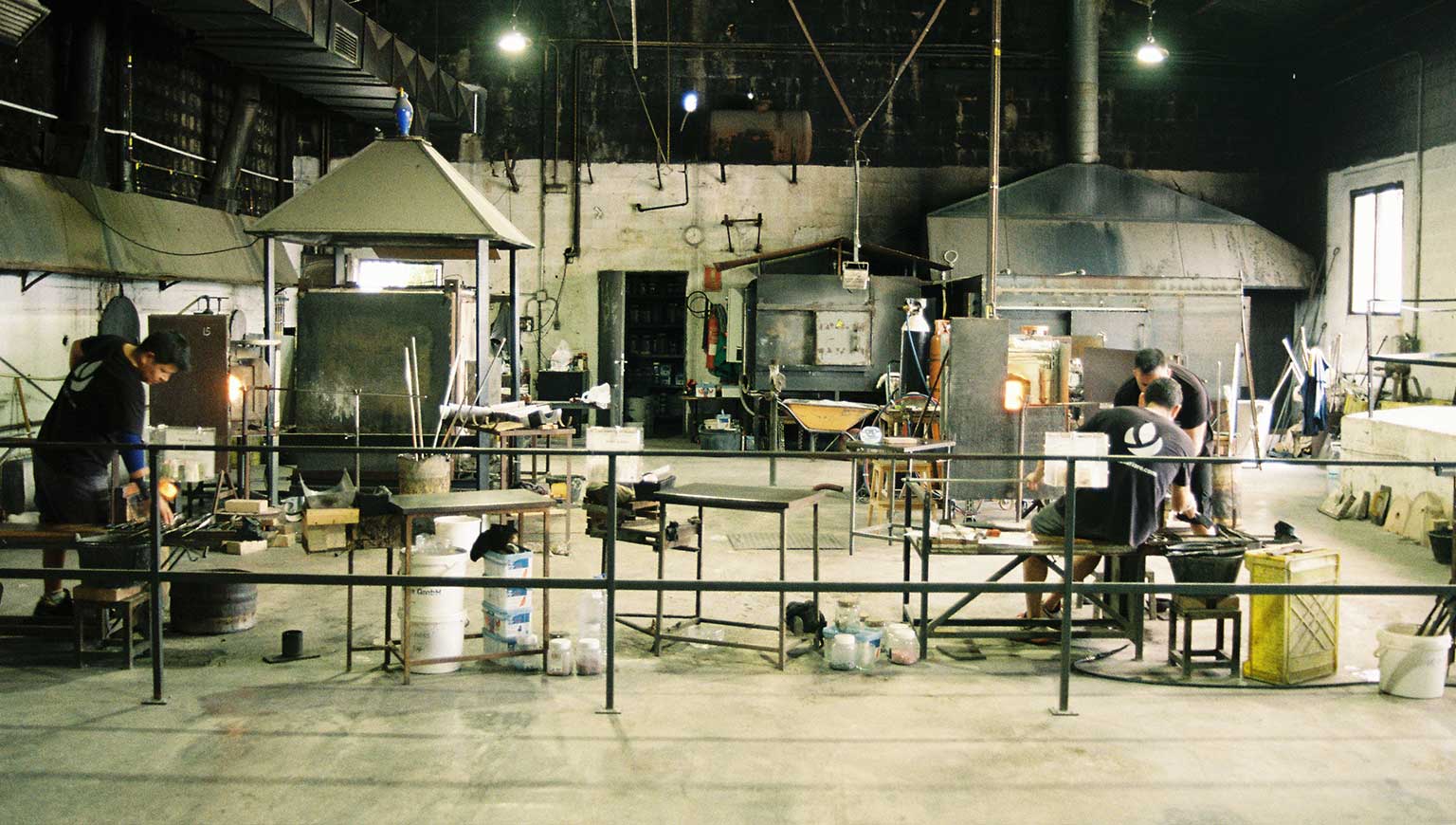A Visit to Glassblowing Factory, Lafiore
As you know, we are always looking to discover new arts and crafts on the island to share with you. After we started organizing glass fusing workshops with Connie Mildner in Llubí, we became intrigued by this infinitely moldable medium called glass. This past week, we decided to visit Lafiore, one of the three remaining Mallorcan artisanal glass factories (besides Gordiola and Menestràlia).
And what a better moment to visit such a place when outside temperatures hover around a mild 30°C! Before entering the building, we were just about to complain about the heat when Miguel from Lafiore gently reminded us that outside temperatures were a mere walk in the park for the artisans we were about to meet… artisans who perfect their craft while standing in front of 1000°C+ furnace all day long. With our jaws dropped from hearing this new information, we entered the factory.

Mallorcan Glassblowing
Once inside Lafiore, we were greeted by a symphony of colors and delicate glass creations. Idyllically situated on the road to Valldemossa, the factory beautifully showcases the time-honored craft of glassblowing, a tradition that goes all the way back to the second century BC, when the Phoenicians first introduced the art to people living in the Balearics. A process that was later followed by influences from Venice (Murano glass), which further contributed to the creation of the unique amalgamation of glass art which we now recognize as typically Mallorcan.


The Process
Fortunately, you can still observe the masters sculpt this captivating medium with great skill today. Building on knowledge from the past, the artisans at Lafiore transform molten glass into a wide variety of shapes. From plates to delicate wine glasses, olive oil drizzlers and intricate artistic sculptures… if there’s one unique aspect of glass, it’s that there’s no shape it can’t take.
The process of free-blowing begins by gathering molten glass at the end of a blowpipe called a ‘canya’, manipulating the mass by using short puffs of air, and shaping the glass with the help of moulds, tongs, tweezers and other tools. Witnessing the process from start to finish inspires a profound appreciation for the craftsmanship involved in creating each unique piece of glassware.
Since glass is no longer moldable after it has cooled down, the entire process should be completed swiftly and without interruption. Once shaped into the desired design, glassmiths use a ‘tallant’ (a type of scissors) to detach the piece from the tube and immediately place it in a slow-cooling furnace, an essential detail that prevents cracks. This multi-step process requires patience, reminding us that any craft can benefit from taking it easy – not rushing towards the end result, but rather enjoying the creative process itself.

A Kaleidoscope of Colors
After marveling at the glassblowing process and just before we completely melted away, we ventured into Lafiore’s showroom. Here, a treasure trove of artistic glass awaited us. Perhaps one of the most captivating aspects of Lafiore is its vibrant color palette. As you stroll through the factory, you’ll be amazed by the variety of hues sprinkled throughout a single work. While Mallorcan glass has traditionally been characterized by a relatively limited palette of colors – white, ochres, blues and greens – nowadays a large variety of pigments are blended into the molten glass.


A More Sustainable Future in Glassblowing
Our visit to Lafiore transported us to a world of traditional artistic mastery and creative inspiration. The fusion of ancient glassblowing techniques and contemporary design create the possibility for endless creative innovation. Whether you’re an art enthusiast, a curious traveler, or simply seeking to immerse yourself in the beauty of Mallorca, we consider it a place worthy of exploration.
That being said, while our natural habit is to try things out by ourselves and get our hands dirty immediately, glassblowing might not be the best place to start if you wish to create your own glass art. Experts at Lafiore warned that it can be a tad too complicated to learn in just a few hours- a few years of intense apprenticeships being more realistic. Luckily, there are other ways of working with glass that are more accessible for novices like ourselves. One great option is Glass Fusing, which you can learn with us in Llubí: See class details. Hope to see you there soon!

Text: Lorenzo von der Velde
Photos: Lisa Heschel
